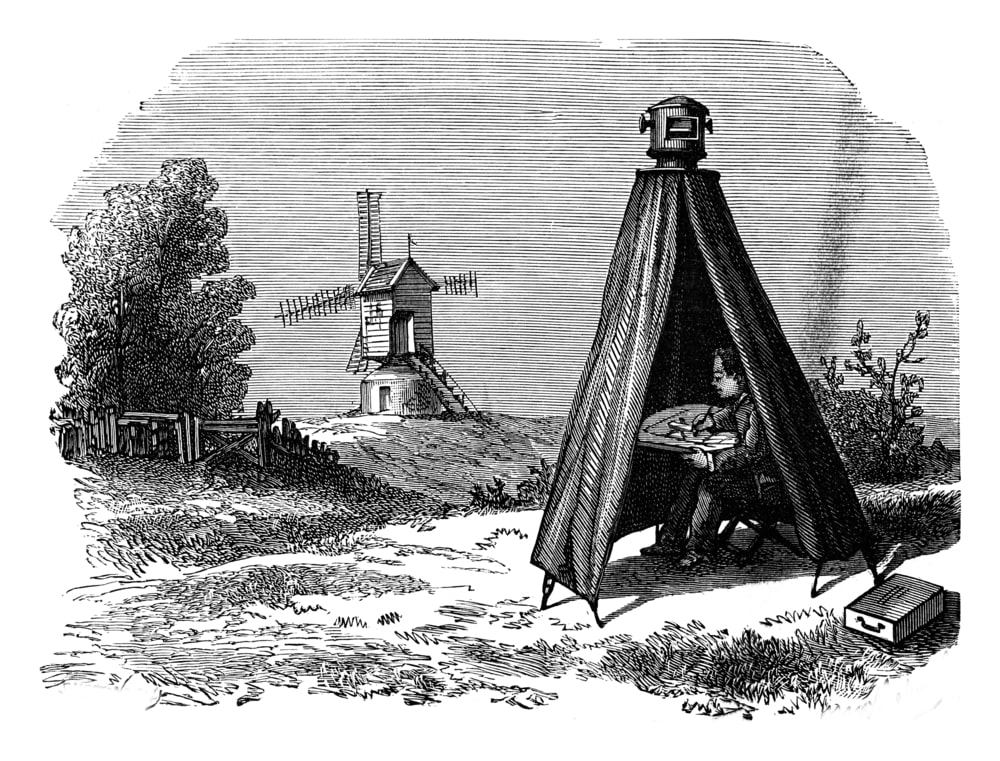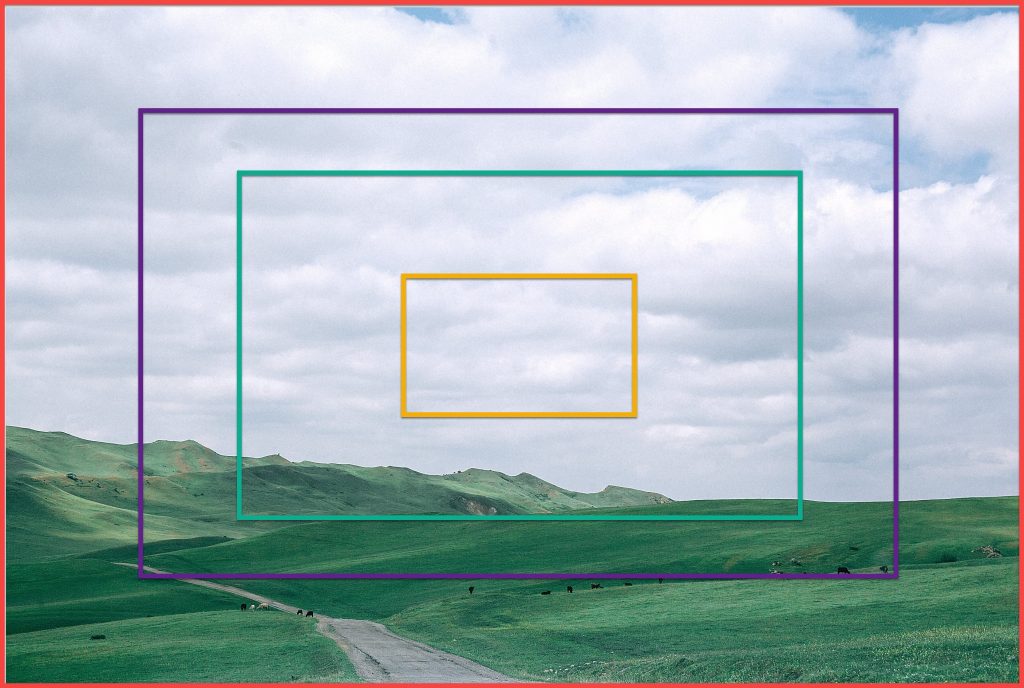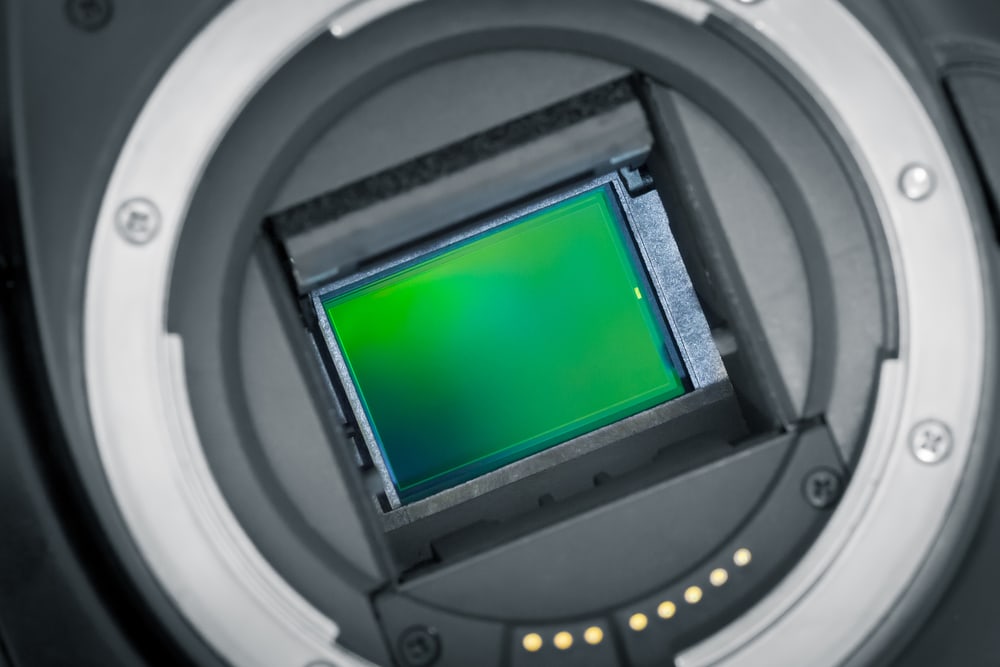There is a lot of basic misunderstanding about the differences between full-frame cameras and cameras with smaller sensors, called crop cameras.
In a way, the transition from a compact or “semi-professional” camera to a DSLR camera represents some progress for the photographer, exposing you to new worlds of creativity and expression.
However, switching to a DSLR camera usually comes with quite a few doubts and a lot of complications. Until you finally learned what is the focal length, you suddenly realize that to get a certain field of view, you will need a wider lens if you shoot with a crop camera.
So, what is a crop? What is a full frame? What is their connection with regard to focus? Why should it be this way? When exactly does this whole story begin and why do we get involved with it?
Full-Frame Vs Crop Sensors, and what is the connection between them?
Definition of a “full-frame” camera – a 35-mm camera (measured in height).
What does this mean to us?
In fact, there are many types and formats of cameras, and like cameras with a sensor smaller than 35mm, there are cameras with larger sensors.
For that matter, let’s go back in time a bit to earlier photography eras.
Before the invention of the camera, images were captured in various ways by “Camera Obscura” and light-sensitive panels, and each photographer would prepare the board according to his peculiar needs and the conditions he faced.

With the invention of the camera, cameras began to come in various formats, i.e. – different sizes of photographic films, and again, according to the needs of the photographers.
In the beginning, the cameras were very large. But gradually, smaller cameras were invented until each photographer could choose the format that suited him.
Large-format cameras (including 4×5, 5×7, and 8×10-inch photo boards) and medium-sized cameras (6×6 cm, 6×9 cm, etc.) were produced because of the bulky size of the plates and film. With these cameras huge prints were possible, and so over the years, these cameras have become useful mainly among professional photographers who need extra-large prints.
One of the biggest breakthroughs in the world of photography is the 35mm camera developed by Kodak. This is the camera we all know, the one most of us shoot with.
This has been the most common photographic format since its invention, and for good reason. Its invention marked the first time they managed to produce a small camera in a very useful photo format that suits both amateur and professional photographers who did not need huge prints. Of course, there were other advantages, such as the use of a light-proof film (which was not the case before), so that a film could be replaced anywhere and at any time without the need for a dark room.
Since then, the 35mm cameras have dominated the world because it was the smallest format of film, which was still comfortable to use.
With the advent of digital photography, an electronic sensor was placed in place of the film. The cost of manufacturing the sensor was very expensive – which would have significantly increased the cost of the cameras. Especially since the technology was still in its infancy, and apparently, it was not possible to produce sensors identical in size to the 35mm film.
Thus, came the term “crop,” or in more professional language – APS-C. In fact, the term refers to cameras with a sensor smaller than 35mm film, which reduces the field of view of the camera, and for cameras with a larger sensor (or film), the field of view of the camera is wider.
However, when they began to produce digital cameras with a full-frame sensor (35mm), they continued to produce smaller cameras with smaller sensor sizes to meet the needs of all photographers.
That’s why you can find sensors smaller than half or a quarter of a 35mm sensor.
What is the focal length?
The term “focal length” refers, not to the physical length of the lens, but to the distance between the optical center of the lens and the digital sensor or film. While this detail is not necessary for most of you, and perhaps less interesting to you, the term “focal length” can tell you something about the field of view of your lens.
Shorter focal lengths are suitable for shooting “open” images, while longer focal lengths are suitable for “closed” images. In other words, short focal lengths give you a wider view, while long focal lengths allow you to have a narrower vision.
If we translate this into angles, we will find that at a focal length of 11mm, the field of view of the lens is 180 degrees, while at a focal length of 135mm, the lens field of the lens is 18 degrees.
You can see this in the following example.

What is the digital sensor and how does it affect focal length?
Because digital cameras do not record the image on a film, they need another way to do it. For this purpose, the digital sensor has been invented, whose role is to be sensitive to photons (light particles), converted into electrons, and translated into an image that will be stored on the memory card.
Apparently, without the sensor, we would still be photographing the old method and spending quite a bit of time and money on film, development, and print.
But…
The digital sensor is the most expensive part of the camera, and in fact, is one of the biggest contributors responsible for its heavy price. Therefore, camera manufacturers who do not want to appeal only to professional photographers continue to produce cameras with smaller sensors at more budget-friendly prices.
This greatly affects what we see through our camera viewfinder, and ultimately, what is recorded on top of the sensor.
A point of thought: the current standard of comparison is with the 35 mm film because it is the most common, but think that when the 35mm format was invented, it was the crop of the big cameras.
In the following example, you see a frame taken with a full-frame camera, that is, 35mm. The colored squares inside the frame refer to your field of view when it comes to smaller sensors (excuse me for inaccuracy, this is only for the demonstration).

The most common field of view (Red) is what you would get if you took the picture with a full-frame camera (35mm sensor).
The Purple rectangle refers to the field of view you would have gotten if you had used the same focal length on a crop sensor. The Green rectangle refers to the field of view with compact 3/4 cameras designed for amateurs/home use, while the smallest square (Yellow) refers to the field of view in very small cameras such as a cell phone camera.
It’s important to know is that apart from a full-frame sensor (35mm), that its size is universal, the rest of the sensors are different in size depending on the manufacturer, and there are quite a few sensor sizes.
When shooting with a full-frame camera, you have a very wide and pleasant field of view, similar to the 35mm film cameras, and the smaller the sensor you are shooting with, the more you lose details from the outside areas of your frame, it’s called the “Crop Factor”.
Because of this difference, manufacturers have begun to produce lenses designed for cameras with smaller sensors (CROP) so that we can get an “identical” viewfinder for the full-frame cameras.
For example, a 17-55 focal length lens designed for a crop camera will be a replacement for a 24-70 lens designed for a full-frame camera.
Or
A 35mm lens for the crop camera will replace the 50mm lens for a full-frame camera.
Still, confused? Let’s look at it differently…
Let’s say you want a cool lens for portrait photography and someone recommends you on an 85mm lens. If you shoot with a full-frame camera, you will get a very comfortable field of view that does not limit you at all in photographing people. However, if you shoot with a crop camera, you will find that your field of view is much narrower and is equivalent to about 136mm, compared to a full-frame camera.
Therefore, in order to get the same field of view (or something close to it), you will need to use a lens with a focal length smaller than 50mm.
So, what does that actually mean?
FX or FF lenses are actually lenses for full-frame cameras, but they can also be used on crop cameras because the lens covers more space than the sensor. What you need to know is that when you shoot with an FF lens on a crop camera, you will lose a lot of the lens field of view.
Unlike lenses for full-frame cameras, lenses designed for crop cameras are not suitable for shooting with full-frame cameras. Although the lens will connect to the camera without any problem. but, because the lens does not cover the whole area of the sensor, the edges of the image will appear as dark margins. These are actually those areas that are not exposed to light.
There are many people who will see an advantage in crop cameras because they can use smaller focal lengths and get similar approximations to larger focal lengths. Thus, you will find bird photographers shooting at 200mm focal lengths on the X2 crop, which gives them a field of view similar to 400mm on a full-frame camera.
But the use of crop has other indirect effects related to optics, and effects related to sensor sensitivity.
Effects related to optics
The sensor does not really affect the optics of the lens because it is not related to it in any way. But, when we want to shoot in a certain field of view, let’s say 50mm, compared to the full-frame, then with a crop camera, we will have to shoot with a smaller focal length, like a 35mm (lens) to get a similar field of view.
And a smaller focal length equals a larger perspective and greater field depth.
You can see this example with your phone camera. Phone manufacturers want to create a situation where there is a very small sensor and at the same time offer you the possibility to shoot wide frames. For this purpose, in order to obtain a 28 mm angle as can be obtained on a full-frame camera, a very wide lens is required, like in an 8 mm and even wider. For this reason, the cellphone camera allows us to take pictures with great depth of field even though we always shoot with an aperture of 2.8 or lower.
Sensitivity-related effects.
As mentioned earlier, the size of the sensor has an additional effect on its sensitivity to light. The sensitivity of the sensor to light depends greatly on the size of the sensor and the density of the pixels. In a sensor as large as 35mm, it is possible to insert many pixels without compressing them too much, and in smaller sensors, the desire to compress more pixels into a small sensor causes pixel density and impairs their sensitivity to light, which is expressed in much more noise and grain with high ISO while shooting in extremely harsh lighting conditions.
There is no doubt that the world of technology is improving daily, and camera manufacturers are developing more crop cameras that are capable of dealing with very difficult lighting conditions, but nevertheless one of the main advantages of full-frame cameras over the crop cameras besides the field of view is the sensitivity to light. In today’s full-frame cameras you can increase the ISO, and still get good details in the image despite the grain.
Conclusion
Crop vs full-frame is one of the most talked-about issues in the world of digital photography today, and there is a lack of understanding in that field. In the end, this information will not necessarily immediately make you a better photographer tomorrow, but it will certainly help you with your doubts (if any), and in understanding the use of lenses and different focal lengths, and the effects of sensor size on your photography.
There’s no doubt that full-frame cameras are far superior to crop cameras, but that does not mean you have to run now and upgrade your equipment.
Examine your needs, the conditions in which you take pictures, the focal lengths which you usually work with, and then you will know what is better for you. If you’re shooting in a studio, ISO is not so important, which means you can get amazing results with a crop camera. On the other hand, if you are photographing weddings or journalism, you will always find yourself needing a full-frame camera for its added benefits.
Either way, if you decide to continue shooting on crop cameras, always remember to check the size of the sensor before buying a camera in order to calculate the focal lengths and translate them into the Crop Factor. And also, take this matter into consideration even before buying a lens.



